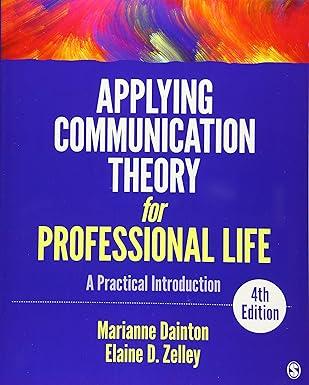Question
In this assignment, intergenerational trauma, difficult feelings, unresolved issues, and memories may arise. What self-care strategies are you going to employ in order to complete
In this assignment, intergenerational trauma, difficult feelings, unresolved issues, and memories may arise. What self-care strategies are you going to employ in order to complete this three-part assignment? After creating a three or four-generational genogram, you will apply newly found self-awareness and its impact on you and your counselor's identity development. Part One: Building the People Part of a Genogram A genogram is like a family tree that includes additional context such as the quality of relationships between members, cultural factors, mental health concerns, illness, cause of death, unusual situations, and other items that are part of socio-emotional and cultural considerations. For this assignment, your focus will be three- or four-generations illustrating marriage, children, gender, and extended family with specific phrases illustrating messages you recall receiving. Typically, a genogram includes three generations. However, if you have children, you may also include them as the fourth generation on your genogram. To create your genogram, follow these steps:
- Identify family members you have had contact with from infancy, including biological and adoptive parents, foster parents etc.
- Recall memories and events where race, gender, class, sexual orientation, religion, ethnicity, ability, appearance, and age were the focus.
- Identify people present, what occurred, and the feelings experienced during these events.
- Using a software of your choice, create a genogram of the family members you have had contact within your past. Use the genogram symbols listed on "Symbols Used in Genogram" webpage, located on the Topic 4 Resources. Some methods of completion could be GenoPro, Piktochart, Canva, Word, or pen and paper. You are not required to demonstrate the quality of relationship (Emotional Relationships) between family members. Focus on "Basic Genogram Symbols" and "Family Relationships" symbols located on the GenoPro website to build your basic genogram.
Part Two: Building the Messages Part of a Genogram
- Identify the messages you received regarding race, gender, class, sexual orientation, religion, ethnicity, ability, appearance, and age next to the corresponding symbol (circle, square, etc.).
- To demonstrate a visual representation of messages communicated between generations use the genogram symbols listed on "Symbols Used in Genogram" webpage, located on the Topic 4 Resources.
- Write the message received in the symbol or next to the symbol marking prejudice or oppression. Next to the person, write the corresponding relative phrases that represent the messages and areas of prejudice and oppression.
Part Three: Genogram Reflection reflect upon the creation of a genogram and discoveries revealed during the process.
- Explain the memories of the listed events and their impact on your cultural development.
- Address which components were most influential in your own cultural development (race, ethnicity, religion, spiritual heritage, gender, sexual orientation, disabilities, socioeconomic status, traditions, and family heritage).
- How does this self-awareness of your past apply to how you view clients as a counselor in training?
- What self-care/self-awareness did you need to complete the assignment? For example, if you experienced any distress during this assignment, what did you do to regulate your emotional response? Explain.
Step by Step Solution
There are 3 Steps involved in it
Step: 1

Get Instant Access with AI-Powered Solutions
See step-by-step solutions with expert insights and AI powered tools for academic success
Step: 2

Step: 3

Ace Your Homework with AI
Get the answers you need in no time with our AI-driven, step-by-step assistance
Get Started



